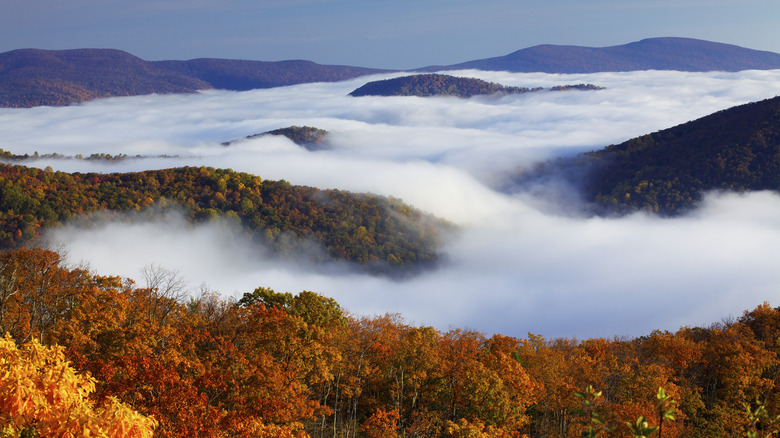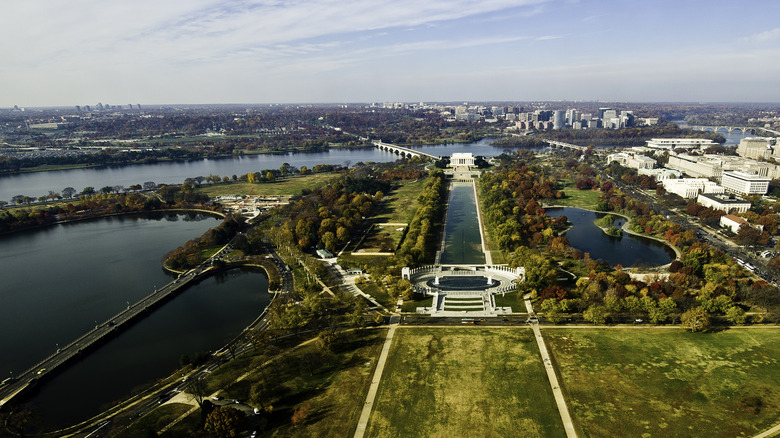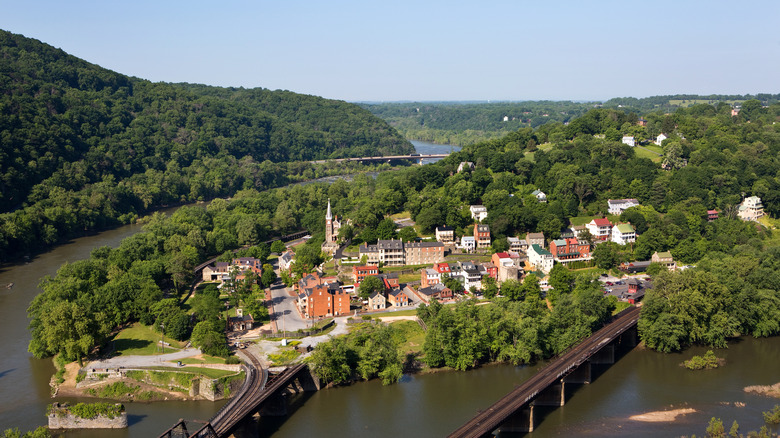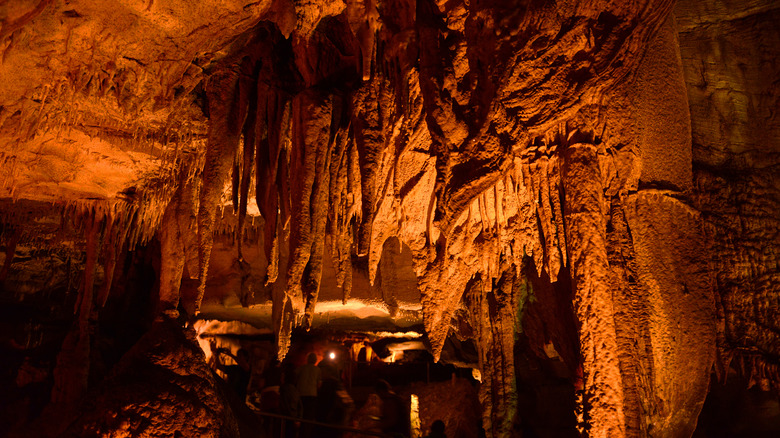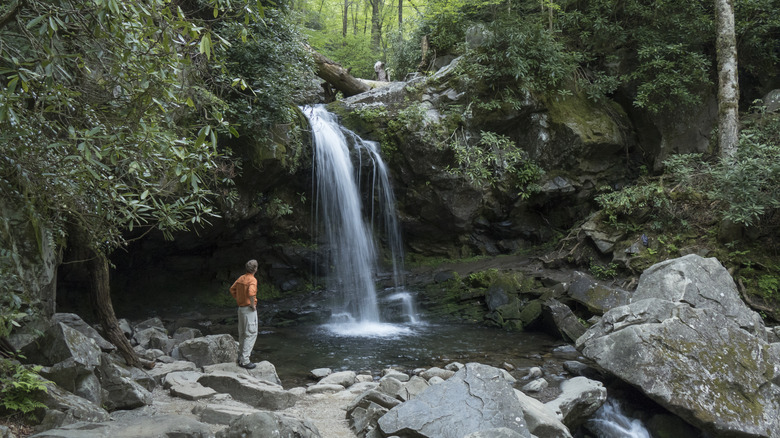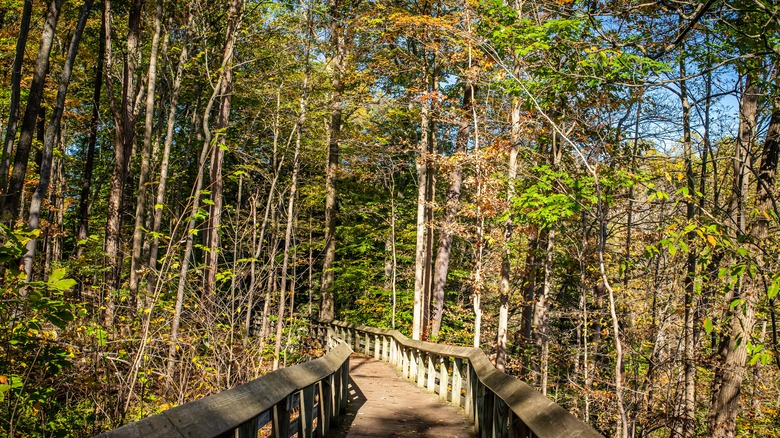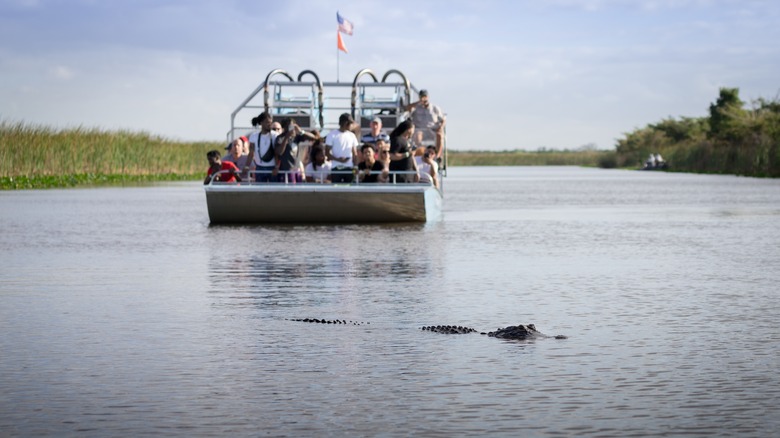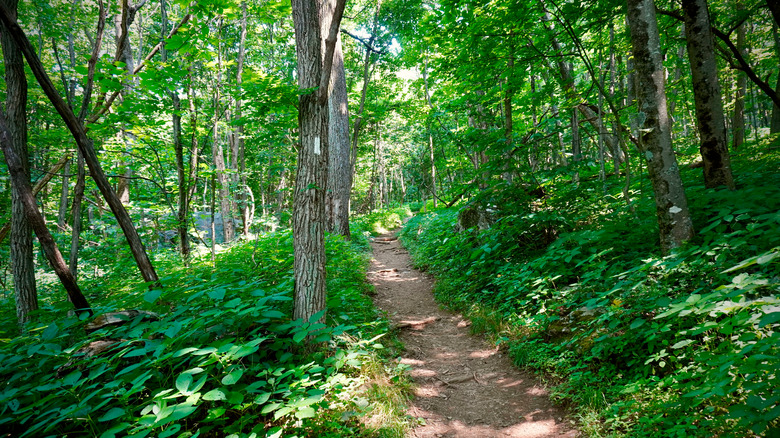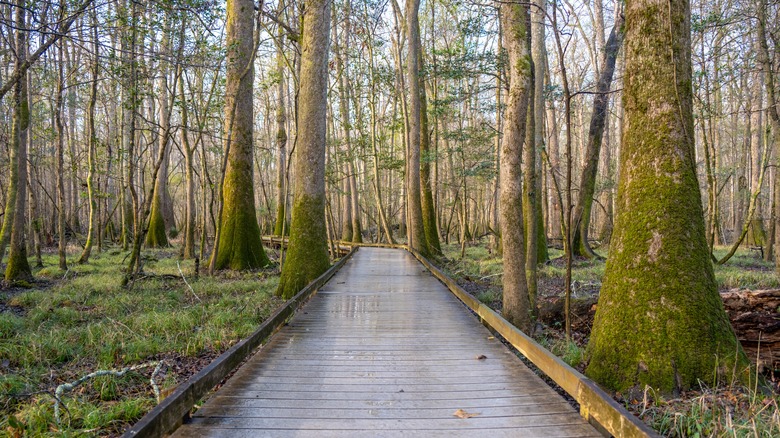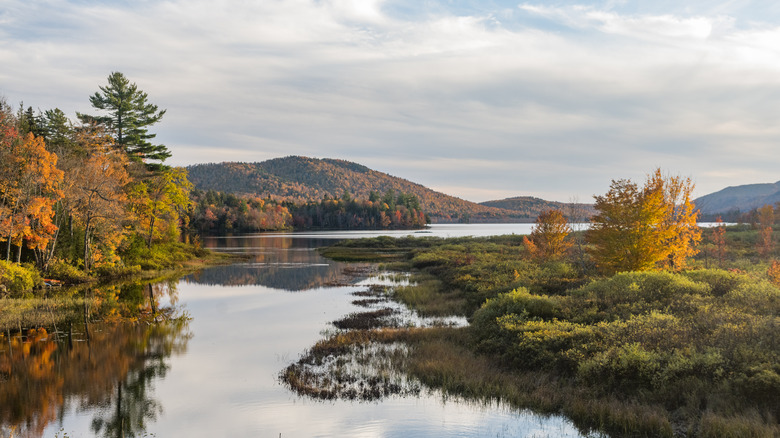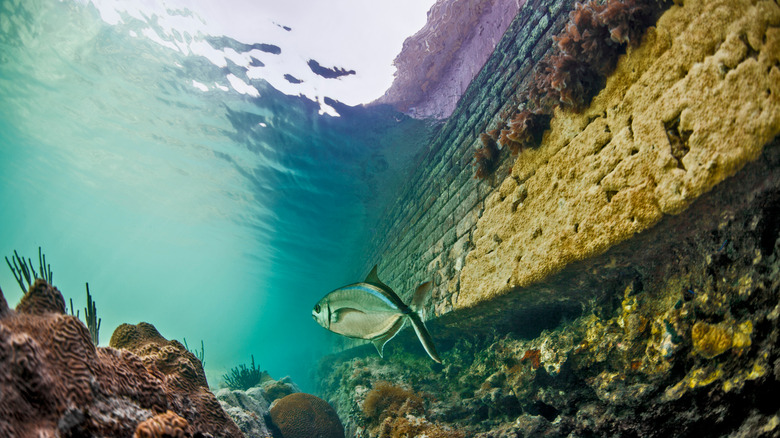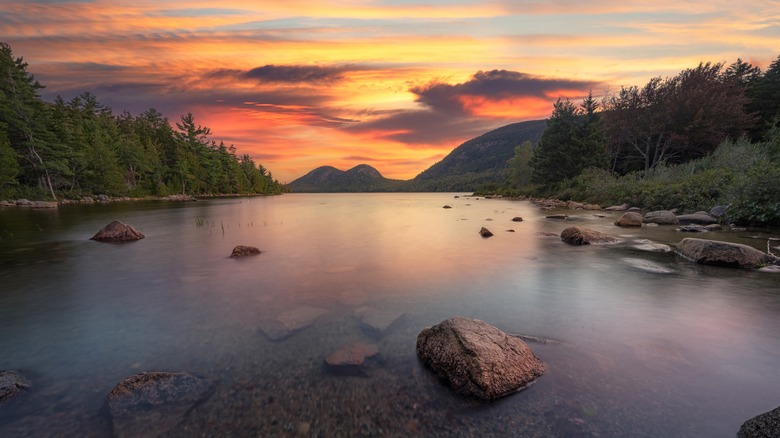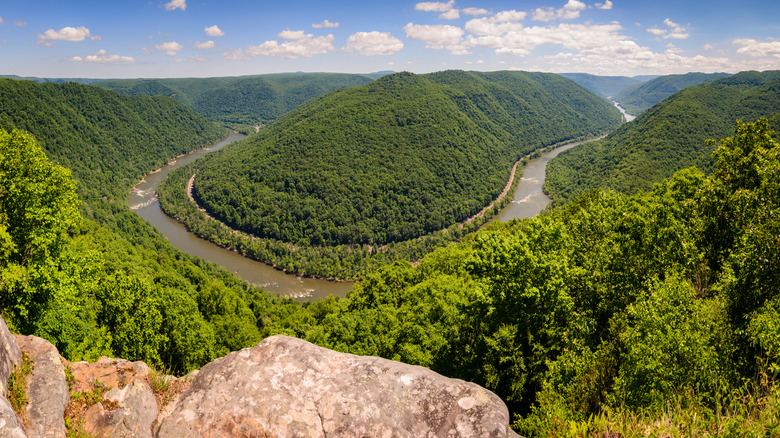Must-Visit National Parks To Add To Your East Coast Bucket List
The East Coast is teeming with wildlands and dense hardwood forests. Unlike the West Coast's vast forestlands and seemingly endless mountainous constellations, the East saw significantly more human activity as European settlers dedicated themselves to building new homes on the backs of these forests. As a result, the ecosystems protected in eastern national parks differ significantly from those elsewhere in the country. Many are flatter; a significant volume is coastal or tropical.
This shouldn't dissuade you from visiting any of the national parks found on the eastern tract of American soil. The two most visited sites in the country are located in the east: The National Mall and Memorial Parks, seeing tens of millions of visitors each year, and the Great Smoky Mountains National Park in North Carolina and Tennessee. With a large bulk of the population calling eastern cities and towns home, parks in this slice of the country offer a remarkable selection of vacation destinations within a reasonable driving distance. All this being said, these are some of the most impressive national park grounds back east that you can't pass up an opportunity to see for yourself!
The National Mall in Washington D.C.
Washington DC's National Mall is one of America's best-known sites. Bristling with beautiful gardens and gigantic memorials to some of the most influential people and events in our history, it's easy to forget that these national monuments are housed within a designated national park. Beginning roughly at the base of the capitol building and extending west toward the Lincoln Memorial, the National Mall incorporates all of this green space, the Smithsonian Institution, and its affiliated galleries, museums, and exhibits. The Tidal Basin and the White House are also within the National Mall's purview.
The National Mall sees around 24 million visitors annually and chronicles American history in every branch, stone, and walkway. For instance, the Washington Monument is famously formed of stone in two distinct shades. Its construction was halted temporarily in 1855 due to political and religious-based disputes, and when it resumed after the Civil War, the stone was quarried from an alternative source. Similarly, the White House was built with slave labor, marking one of the most visible icons of American freedom with its exact, evil inverse. On a more upbeat note, typical sites across Washington D.C. include the Japanese cherry blossoms that were a gift from the Japanese people more than 100 years ago in 1912.
Harpers Ferry National Historic Park
Harpers Ferry is another unique national park in that it's been designated a National Historic Park that encompasses land in West Virginia, Maryland, and Virginia where the Potomac and Shenandoah Rivers meet. Thomas Jefferson visited Harpers Ferry in 1783 and described the site as one of nature's most remarkable scenes. Harpers Ferry and the National Historic Park that now rests around the West Virginia town was the site of John Brown's abolitionist uprising. In 1859, John Brown led a rebellion that captured the Federal Armory. He failed and was hanged.
On the site today, visitors can see the firehouse in which John Brown and his rebel group defended against American forces, ironically led by Robert E. Lee just a few years before the outbreak of the American Civil War. This site has been renamed John Brown Fort. The park also encompasses battlefields that Union soldiers fought across to preserve the nation and, in a way, continue the mission started by John Brown and countless others like him.
In terms of scenery, Harpers Ferry never fails to impress. The Appalachian Trail runs through this part of the country, creating sweeping vistas and a beautiful rise in the landscape. Joined with the confluence of these two substantial rivers, the area sparkles with natural beauty, and visitors can expect hiking, white water rafting, and a historical survey of the landscape that's hard to beat.
Mammoth Cave National Park
A UNESCO World Heritage Site, Mammoth Cave National Park supports the largest known cave system in the world. Mammoth Cave supports more than 400 miles of explored cave structure, and while no visitor should expect to see the whole thing, there are miles of marked trails within the cave system waiting for you to adventure through them. In addition to the caves themselves, there are miles of hiking trails outside that offer a similarly fantastic experience. You can also ride horses and canoe or kayak down the Green and Nolin Rivers within the park.
All this makes Mammoth Cave far more than just a cave system. The park is home to a wide range of plant and animal species and has also been named an International Biosphere Reserve. Moreover, the National Park Service suggests the Mammoth Cave National Park is a stargazer's haven, especially after a long and rewarding day of hiking through the park's mountainous landscape or subterranean cave network. Camping in the park offers hours of tranquil nighttime sky in a location untarnished by modern electric light pollution. This national park is about 95 miles from Louisville, making it a protected natural environment far enough out of the way but within an accessible distance from major metropolitan areas and airline connection options.
Great Smoky Mountains National Park
Great Smoky Mountains National Park is right on the border between Tennessee and North Carolina. Outside of the National Mall in Washington DC, it's the most visited National Park in the United States and routinely draws more than 12 million visitors every year. Some of the highest mountains in the eastern expanse of the U.S. can be found within the Great Smoky Mountain chain, a part of the iconic Blue Ridge Mountains that dominate this area. The land now protected under this national park designation was home to a myriad of indigenous peoples and their cultures throughout thousands of years of human habitation.
Combined with this corridor being tucked away high in the mountains, this is one of the best places in the American East to explore old-growth forests and ancient habitats. Named a UNESCO World Heritage site in 1983 and an International Biosphere Reserve in 1988, the forests and trails are a sight to behold. Clingmans Dome is the highest point in the national park, and the observation tower found here is an excellent stop for anyone visiting the region. The views are unsurpassed from this magnificent ceiling.
Cuyahoga Valley National Park
The Cuyahoga Valley is a uniquely historical location. It's only been a designated national park since 2000, but acted as the impetus for the Clean Water Act and the establishment of the Environmental Protection Agency when the river caught fire in 1969. The national park is a success story in reprioritizing the natural environment around us. Thirty-three thousand acres of the landscape were designated as a National Recreation Area in 1974, and years later, the national park continues to place wetland regeneration at the forefront of what this protected area stands for.
Of course, the Cuyahoga Valley National Park also sports a truly remarkable landscape. There are over 125 miles of hiking trails throughout the park, and each trail will take you along a route full of spectacular waterfalls, rock gorges, and forest vegetation. This park can be found just a short hop from Cleveland and Akron, making it a majorly accessible addition to the National Parks Service's list of protected sites of fantastic history and beauty throughout the country.
Everglades National Park
Home to one of the most diverse ecosystems in the country, Everglades National Park covers a huge swath of land across the southern expanse of Florida. The Everglades are a gigantic, swampy, subtropical landscape that offers visitors a wealth of activity options. The national park is only about an hour by car from Miami, making it an accessible destination for travelers flying in from elsewhere.
Within Everglades National Park, you can choose your adventure with boating and kayaking rentals or hop on an airboat and get whisked around the Everglades in style on these unique vessels that slide across the top of the water. You will spot crocodiles and alligators (the only place in the world where both thrive) and find snapping turtles and anacondas that have been released into the wild, wreaking havoc on the indigenous ecosystem.
One thing that stands out about Everglades National Park is its virtually unchanging landscape. When the Spanish first arrived on the shores of Florida around 500 years ago, they encountered a subtropical wilderness dominating the state's landscape that looked and felt much like the Everglades do today. While the Spanish experienced many difficulties navigating the space, Native American Miccosukee, Seminole, and Calusa tribes made the western Everglades their home. In contrast, Tequesta, Jega, and Ais tribes could be found on the southeastern edge of the state. They all called this region home for centuries and successfully bent the Everglades to their will.
Shenandoah National Park
Shenandoah National Park is somewhat of an oddity. The park is 75 miles west of Washington, D.C., making it so close to this metropolitan hub that it could nearly act as a commuter suburb. And yet the Appalachian Trail runs directly north through Shenandoah National Park, providing 500 miles of trails dominated by unbelievable scenery and what feels like a portal back in time, especially if you drive over from D.C. for the day.
Visitors to Shenandoah will be able to hike, camp, go whitewater rafting, and even do a bit of mountain climbing. For those with mobility issues or a slightly tame or sensitive venture, Skyline Drive offers a 105-mile paved route through the heart of Shenandoah National Park along the crest of the Blue Ridge Mountains that live within it. This height allows for spectacular views from start to finish and will ensure that you don't feel you've missed out on an opportunity just because getting out of the car isn't in the cards for the day out in this spectacular natural wilderness.
Congaree National Park
Congaree National Park is another spectacular American wildland found just a stone's throw from one of the East Coast's populous urban cityscapes. Congaree can be found just 18 miles southeast of Columbia, South Carolina's state capital. But what makes it unique is the rich environmental and human history imprinted across the national park's landscape. The biosphere supported throughout Congaree National Park runs across the Congaree and Wateree Rivers floodplain. This makes it an area of extreme vegetative support. The diverse ecosystem and visitors can trek directly through the marshes and champion-sized trees that characterize this landscape.
Another important feature of the national park lies in its history with America's newly freed enslaved people. In the late 1860s, South Carolina became the only state in the South to give land to African Americans. Much like the Homestead Act of 1862, the concept of giving land to people who were willing to farm was an incredible step in the right direction toward enshrining new freedoms and wealth in people who had been denied them for centuries. Of course, the program was eventually derailed by the era's politics, but not before African Americans had managed to secure almost 45,000 acres collectively in South Carolina, specifically the Congaree region, by the end of the following decade.
Adirondack Park
Adirondack Park is the largest protected area in the Lower 48, clocking in at over 6 million acres of land. The park encompasses a segment of the Adirondack Mountains in upstate New York. It is a mixture of public and private lands that gives visitors spectacular views of one of the most scenic landscapes in the eastern United States. Adirondack Park is not a national park, so its inclusion here might seem strange. However, the reality of this discrepancy in designation boils down almost certainly to the fact that more than half of the lands within Adirondack Park are privately owned, meaning they couldn't be administered federally by the National Park Service. This is a prerequisite for incorporation. If it were to be added as America's next national park, entry into this sprawling landscape that includes 105 towns and villages would likely come at a cost.
Instead, the State of New York manages Adirondack Park and remains open to the public without interruption or entry fee. The state owns roughly 2.6 million acres of the Adirondack landscape and incorporated it in 1892 as one of the first Forever Wild Preserves in the United States. This move was done to conserve the natural beauty and untamed wilderness that was coming under increasing threats of deforestation. Visitors will find all kinds of adventures in the Adirondacks, including skiing, hunting, fishing, camping, and, of course, many miles of hiking trails.
Dry Tortugas National Park
Dry Tortugas National Park is uniquely situated at the bottom of the Florida Keys. The national park comprises seven islands roughly 70 miles west of Key West. The area was first explored in the early 1800s by American naval scouts in search of positions that could be used to protect shipping routes from piracy. The national park is almost entirely made up of aquatic terrain, making it a unique site in the National Park Service's portfolio of amazing locations.
The primary land attraction is Fort Jefferson, a brick fort built between 1846 and 1875. The structure is one of the largest forts ever built and sits on the vast majority of Garden Key, which measures roughly 14 acres. The Fort was never fully armed or completed, but it provided an advanced position for defending the American homeland and American naval interests in the region. Union troops rushed to secure this key strategic site during the Civil War after Fort Sumter was captured.
Getting to Dry Tortugas National Park requires a ferry or airlift. Flights and boat passage can be arranged from Key West without much hassle. Once you've arrived inside the aquatic boundary of this tropical national park, you can expect to find stunning undersea coral landscapes, warm waters teeming with fish and other marine life, and a chain of islands that are perfect for picnicking, relaxing on the beach, and soaking in the sunshine.
Acadia National Park
Acadia National Park is found off the coast of Maine on Mount Desert Island. In the far northeastern corner of the country, Acadia is a bit of a trek for many explorers looking to venture into a new national park. But a visit here is well worth the effort and time. The island is home to Bar Harbor, one of the most picturesque towns on the East Coast, if not anywhere in the United States. From this base, you can journey into the park to find a host of classic northeastern maritime activities along the park's 60-mile coastline, including kayaking and fishing, and there is an excellent variety of beachfront to discover here as well.
Hiking trails abound throughout the landscape, spanning 150 miles, making this a multifaceted nature retreat. Another unique feature is the carriage roads that weave through Acadia National Park, 45 miles from them. Mount Desert Island hosts millions of visitors every year, and Acadia National Park is often among the most favored by explorers focused on the East Coast. Even so, with so much to do and so much beautiful landscape to traverse, this isn't a space that has to feel overcrowded or played out.
New River Gorge National Park
New River Gorge is at once the youngest and oldest in America. The New River is the second oldest geological river formation in the world, and it's one of the few on the North American continent that flows north. The park, however, was established only a few years ago, in 2020. This makes it the newest national park in the United States. Here, you can go whitewater rafting, in the tradition of centuries of Native Americans who used the eons-old waterway for transportation. The New River and its carved-out gorge are the perfect backdrops for fishing, hiking, and relaxing out in the wilds of nature.
There are also more than 1,600 established rock climbing routes within the gorge, making this a fantastically diverse climbing region long known as one of the favorite rock climbing havens in the country. The trails around the river span almost 100 miles, meaning multiple trips back to New River Gorge will yield continually novel and exciting experiences in this West Virginia treasure.
